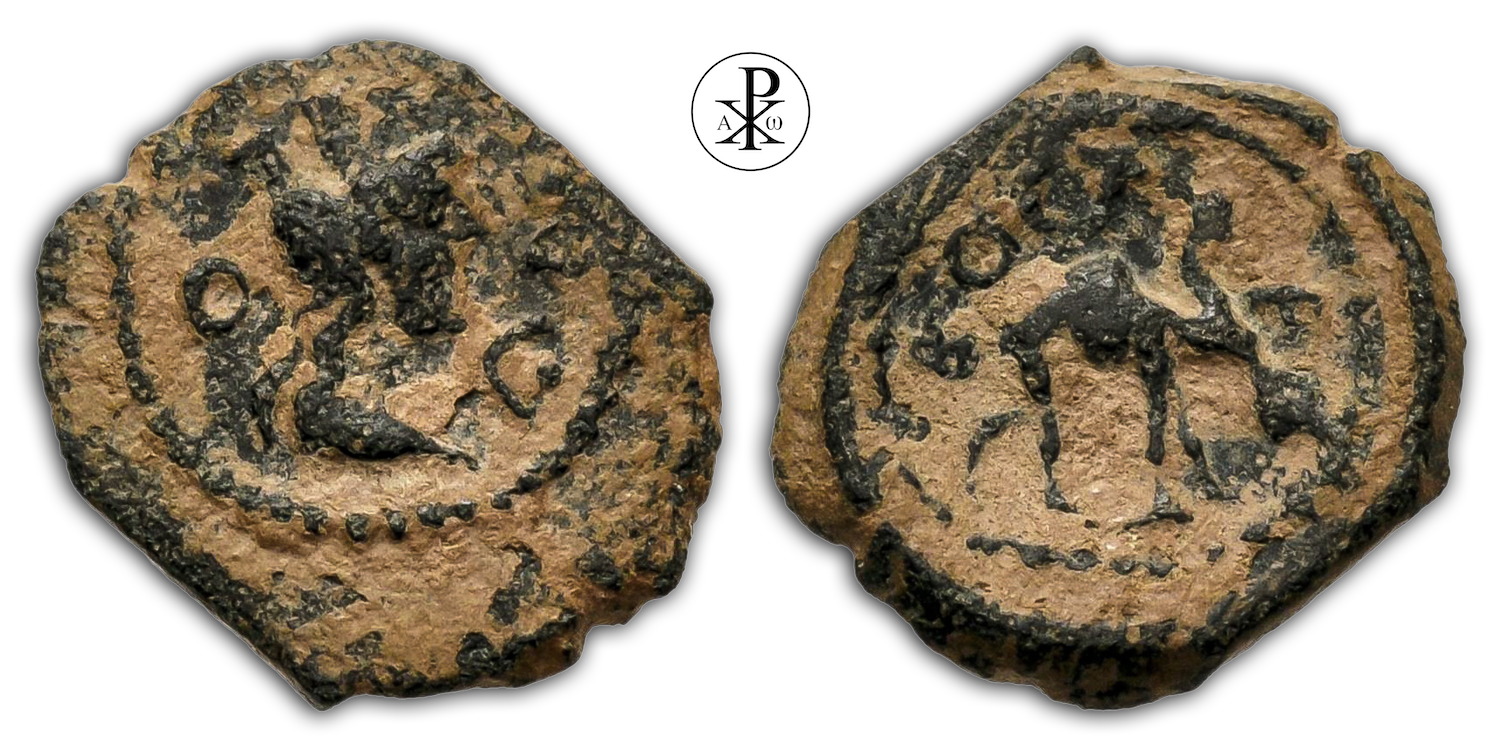Imperator Caesar Marcus Aurelius Commodus Antoninus Augustus
Reign: Pseudo-autonomous, Commodus
Mint: Bostra, Arabia
Date: 181/182 AD
Nominal: Bronze
Material: AE
Diameter: 13mm
Weight: 1.43g
Reference: RPC IV.3 3532 (#4 this coin)
Reference: Kindler Bostra 19
Reference: Sofaer 25 var. (same)
Reference: SNG ANS 1198-1200
Reference: Spijkerman 3 var. (date arr.)
RPC Online: https://rpc.ashmus.ox.ac.uk/coins/4/3532
Rare: Specimens 4 (3 in the core collections)
Provenance: CNG Classical Numismatic Group Lancaster, USA (Auction 536, Lot 377)
Pedigree: –
Obverse: Turreted and draped bust of Tyche right
Inscription: Ɛ ΟΣ
Translation: Etos Omikron Stigma
Translation: Year 76 (Omikron 70 + Stigma 6) = 181/182 AD
Reverse: Camel standing right
Inscription: ΒΟϹΤΡΑ
Translation: Bostra
Translation: City of Bostra
Comment: Bostra (or Bosra) is probably located on the site of the Bronze Age small state of Buṣrūna, which existed in the 2nd millennium BC and is mentioned in the Amarna letters. It was not until the 4th century BC that the site was again mentioned in writing as part of the Seleucid Empire. From the 2nd century BC it belonged to the Nabataean Empire, which temporarily extended to Damascus in the north, and was its capital from 70 to 106 AD. After the conquest by the Roman Emperor Trajan, the city was incorporated into the Roman Empire, as was the entire Nabataean Empire; since that time, a Roman legion was also stationed here (Legio III Cyrenaica). Elevated to the capital of the province of Arabia Petraea in 106 AD, under the name of Nova Trajana Bostra, it was a market town for the Bedouins of the eastern desert and an important commercial center, since the main roads to the Red Sea converged here. Under Emperor Severus Alexander (222-235 AD) the city was elevated to a colony (colonia) and under Philip Arabs (r. 244-249 AD) it became a metropolis. In the 4th century it was considered a “great city”, housing numerous ornate buildings, churches and theaters. The city was the seat of a bishop. In the 6th century, a five-nave basilica was built, which was one of the largest in the Middle East.
The city offers numerous testimonies of its eventful past. The most famous and impressive is the well-preserved Roman theater, which – like much of the other Roman evidence – was built in the third century AD under the Roman emperor Severus Alexander. 15000 spectators could be seated here. Like other Roman theaters, this structure has remarkable acoustics. The lower tiers and the orchestra were built into the ground in order to be able to statically support the steep tiers. The building is well preserved mainly because it was not used as a quarry in post-Roman times, but was expanded into a citadel by the Arab rulers. The Roman city extends northward at the feet of the theater. Here are remains of the baths, an impressive colonnaded street that was Bosra’s main artery in ancient times, and the sanctuary of Cybele. Next to it stands a 6th century cathedral of Saints Sergius, Leontius and Bacchus. To the east of the city one can see the ruins of a palace whose foundations probably date back to the Nabataean period.
